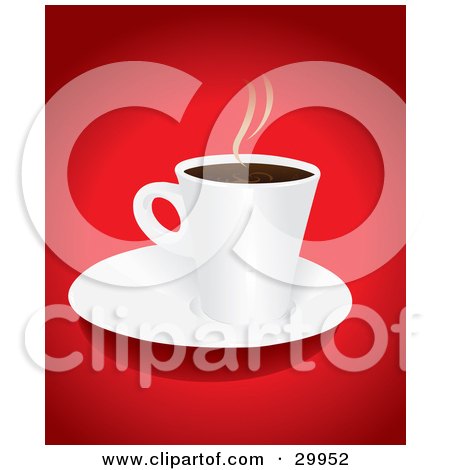
Bien sûr, je fais du blogging actuellement du café !
Having found myself alone with time to kill in the world's fashion capital, I decided to do one of the few activities that is actually fun alone: go shopping. As I gazed up in awe at the stained glass ceiling of the infamous Galleries Lafayette, and then proceeded to wander through an unending seven floors of pure decadence, an epiphany occurred to me: Selection is the enemy of high fashion.
Having found myself alone with time to kill in the world's fashion capital, I decided to do one of the few activities that is actually fun alone: go shopping. As I gazed up in awe at the stained glass ceiling of the infamous Galleries Lafayette, and then proceeded to wander through an unending seven floors of pure decadence, an epiphany occurred to me: Selection is the enemy of high fashion.
Allow me to elaborate: Let's say you are a wealthy consumer looking to wear only the best in fashion. You enter an expensive store that sells all jeans, but only one pair is embroidered and the rest are plain. If you prefer a touch of creative flair to your jeans, or even just anything colorful, you will likely try on and consider buying the embroidered pair. The nature of the embroidery itself is not important. It could be any design, but the important thing is that the jeans are embroidered and looked unique, at least in the context of that store and the few others comparable to it. Now, if there were several pairs of embroidered jeans available, you would inevitably become a more picky consumer: judging them by the nature of the embroidery to select between pairs. This brings your attention to the embroidery itself, and thus, leads you to possibly turn down hypothetical purchases because of a detail that might otherwise have gone unnoticed.
This may initially sound ridiculous, after all, if the embroidery is not exactly what you want then why not wait until you find another, fully perfect pair? Unlikely. After all, you've constrained yourself to just the nicest of stores, which isn't a lot, so the likelihood of finding embroidered jeans to begin with may not be so high, let alone another pair that you prefer. By providing you with just one pair of embroidered jeans instead of several, the designer is actually manipulating you into making a less informed decision, and buying that one pair.
Louis Vuitton is a perfect example. Would you like a large bag? OK, we offer a selection of styles, but almost all in the exact same print. When Louis Vuitton does offer things in different colors, the product immediately looks more appealing to a consumer simply because it's more unique and creative, while in reality the designers only had to change a simple detail to generate extra interest, and ergo, an excuse for extra profits.
This fact becomes obvious when looking at the bigger picture: expensive boutiques and top designer stores are small- selling just a few items that rarely come in more than one or two colors. Larger and less expensive stores however, often have entire racks of the exact same sweater in 20 different colors, hoping to draw in and please as many consumers as possible. One might even refer to it as democratized fashion.
This discovery also fits perfectly into the classical irony of high fashion. Every good designer knows that fashion is never simply a question of what outfit is the most form fitting and appealing; it's always about personal identity and expression. The classic irony of high fashion then, (in my opinion) is that top designers often draw their inspiration from sub cultures and less glamorous lifestyles. Where would fashion be without beat, hippie, army/navy, agricultural (think ripped jeans), or punk inspirations? Ultimately, you have people shelling out $200or more for a plain, subtly floral shirt that says "look at me, I'm just a simple farm girl." Clients who wish to express their personality in a certain way while sticking only within designer circles are immediately cheated of the selection they would have if they dropped their airs and headed down to Marshalls, which many are unlikely to do, insisting on nothing but the "best" quality. To return to the first example, If you want to dress well but also look like a hippie, and there is only one pair of embroidered jeans available, you are almost definitely buying those jeans.
But what about the embroidered design itself? Does that mean anything? Allow me another anecdote. A few years ago, I became a fan of the color brown. Not only was it my top choice school at the time (har har) but it was warm and neutral without being as impersonal as black or grey. Since Pink had been a favorite color of mine for awhile, I went shopping for bed sheets hoping to find a combination of the two colors. Low and behold, it seemed that Target’s entire bedding collection had gone brown and pink that year. No joke. As great as this was for me, the brown-and-pink-desiring consumer, I couldn’t help but be a little freaked out. Was this just a coincidence? Or were there other forces at work that had somehow subconsciously driven me to desire specifically brown and pink bedding?
While Target arguably falls on the more "democratized" side of the fashion spectrum, this is still very much related to the question of the nature of the embroidery on the jeans. By being ambivalent as to the specific type of embroidery on the jeans but buying them anyway, the consumer is, in fact, propagating the style chosen by the designer even though they have had little say in what it is. (Imagine voting for a party but only understanding half of the platform, who knows what could fill the other half?) Shall sparrows be big this year? Ok, the embroidery will be sparrows then. Flowers? Hearts? Brown and Pink? It's subtle, but it's very possible.
And this of course brings us to the ancient paradox: are the designer chickens controlling our eggy taste in fashion? Or are the tastes of the people hatching designers that better "suit" our needs? Are such decisions best left up to us, the average consumer, or the "talented" fashion designer? I'm not quite sure, but one thing is: if you've actually bothered to read this entire blog post (making you awesome, by the way) shopping may never be the same again...














2 comments:
More than anything else, I now want to go shop in salvation army.
well done?
I know, right!?
The only comforting thought is a mertocracy-like perspective, where it's ok for designers to do this because they are truly best suited for the job...
and thanks, I try. Not mention thanks for reading that entire post...
Post a Comment